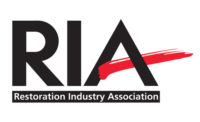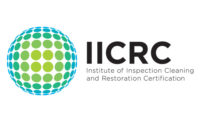After much anticipation, the IICRC has completed and published the 4th Edition of the ANSI/ IICRC S500 Standard and Reference Guide for Professional Water Damage Restoration.
The S500 has been a hallmark standard in the restoration industry since 1994. In 2006, the IICRC released its first ANSI-accredited standard with the third edition of S500. ANSI requires that all standards be reviewed and revised periodically, so in 2009, the fourth edition Consensus Body was formed. Since then, the S500 Consensus Body has been working to not only review the standard, but to revise the document to improve readability and usability, as well as provide additional annotation of third-party reference sources.
As a result, the just-released fourth edition of the ANSI/IICRC S500 provides better third-party basis for the technical sections and enhanced procedural sections that match typical job flows, making it easier to use by industry stakeholders.
What is the S500?
The S500 is a procedural standard that provides a specific set of practical and procedural standards for water damage restoration. It does not provide a specific protocol for all water damage restoration projects; rather, it outlines the foundation for basic principles of proper restoration practices.
Throughout the review process there has been extensive consultation and information obtained from numerous sources including the scientific community; international, national and regional trade associations serving the professional restoration industry; chemical formulators and equipment manufacturers; cleaning and restoration training schools; restoration service companies; the insurance industry; allied trades persons; and others with specialized experience.
ANSI/IICRC Standards Development Process
IICRC is an American National Standards Institute (ANSI) accredited standards developing organization that develops standards meeting the basic tenets of due process: openness, lack of dominance, balance, consideration of views and objections, consensus vote and an appeals mechanism.
In compliance with these procedures, the S500 Standard and Reference Guide was revised by the balanced S500 consensus body, and went through a rigorous public review process that included five rounds of open public review periods.
Consensus Body Makeup
The S500 consensus body is the committee that approved the content of the standard and whose vote demonstrates evidence of consensus. Based on ANSI’s guidelines, the S500 consensus body was made up of a committee of materially interested parties (MIPs) within the following three categories:
- Producers. Producers are those individuals or organizations who produce, manufacture or supply goods and/or services covered.
- Users. A user is an individual who will be using the Standard and/or performing the services covered by the Standard.
- General interest. General interest parties are those individuals or organizations that are directly and materially affected by the Standard and otherwise interested in the goods and services covered by the Standard.
The consensus body members, affiliation and interest categories are as follows: Mickey Lee (Chairman), Mickey Lee Consulting – Producer; Chris Taylor (Vice Chairman); Aspire Education Institute, Producer; Brandon Burton, Legend Brands – General Interest; Larry Carlson, Phoenix Restoration Equipment – General Interest; Jim Holland, Restoration Consultants – User; Ron Reese, REE-Const./First General Idaho – Producer; and Howie Wolf, HW3 Group, LLC – User.
This edition, as with previous IICRC standards, will be published in conjunction with a supplementary reference guide.The intent is to use the principles outlined in the Reference Guide as a tool to better understand and apply the Standard itself. However, the Reference Guide is not considered part of this Standard and does not carry the same status as the standard of care, but can be useful supporting information.
Summary of Changes
Following is a summary of the changes made in the 4th edition:
- No significant content or procedural changes were made in eleven chapters, including “1. Principles of Water Damage Restoration,” “2. Microbiology of Water Damage,” “3. Health Effects from Contaminant Exposure,” “4. Building and Material Science,” “8. Safety and Health,” “9. Administrative Procedures and Risk Management,” “11. LCCC”, “12. Specialized Experts,” “14. HVAC,” “15. Contents Evaluation and Restoration,” and “16. Large or Catastrophic Projects.”
- “Psychrometry and Drying Technology” (Chapter 5) was significantly rewritten to base the science and technical information on research and published literature.
- “Equipment, Instruments and Tools” (Chapter 6) was expanded with additional tools and instruments and several descriptions were clarified.
- “Inspections, Preliminary Determination and Pre-Restoration Evaluations” (Chapter 10) was significantly reworked to match how the process is actually performed on different categories of water intrusions.
- “Structural Restoration” (Chapter 13) was significantly reworked in the flow and procedures including: (1) remediation & controlled demolition prior to restorative drying, (2) definitions of Classes of Water, (3) dehumidifier calculations and (4) air mover calculation.
- “Materials and Assemblies” (Chapter 17) is a new chapter in the Reference Guide that consolidates information that was previously scattered in chapters 4, 10 and 14. It should provide a more user-friendly table for the reader.
To the Users of the Document
One thing the consensus body kept in mind when revising the S500 was the impact the Standard has on the industry and its use by various stakeholders (e.g., general contractors, remediators, insurers, consumers, third-party administrators, brokers and other specialized experts). Even though each water damage project is unique in some fashion, the principles and intent of the document should be applied in all cases. It is up to the professional restorer to maintain the spirit of the standard when deviation is necessary.
Highlights of Specific Changes
Following are specific areas of interest that impact procedures on water damage restoration projects:
Category of Water
Due to the importance of establishing the category of water, materially interested parties are encouraged to familiarize themselves with the important clarifications and changes made in this section. The definitions of Categories one, two and three water remains nearly unchanged, but additional guidance on factors that can cause subsequent changes in the category has been expanded. Additionally, the fourth category has been re-titled as “Regulated, Hazardous Materials and Mold” with a clearer definition.
Class of Water Intrusion
The definitions of the four Classes of Water Intrusion were redefined to offer a more objective means of estimating the evaporation load in a building which is then used to determine the initial need for humidity control (e.g. dehumidification, ventilation, etc.). For classes one, two and three, the restorer would estimate the approximate percentage of the total surface area (e.g. walls, floor, ceiling, etc.) in a drying environment (e.g. a room, space, building, etc.) that is actually affected by the water. Guidance has also been provided that the restorer would make this determination based on the “… affected materials remaining within the drying environment at the time drying is initiated.”
Inspections
This section received a significant restructuring of its flow, while maintaining procedures related to the initial as well as on-going inspections. The decisions on the re-flow work in this section were driven by the order in which the activities are performed or needed on a project. This rework resulted in this section being approximately two-thirds the length of the previous edition.
Structural Restoration
The Structural Restoration section and chapter was also significantly restructured to flow generally in the order a restorer would perform the activities on a typical water intrusion project. The primary change is to affirm what most restorers have been doing for years and that is to complete Category two and three remediation activities before restorative drying is aggressively performed.
The calculation for dehumidification will again be offered in the Reference Guide only. Additionally, two other detailed methods that take into account various building characteristics (e.g. construction, HVAC) and the potential impact of the weather, will also be included. Information will be offered for use with larger desiccants as well as refrigerant-based units (i.e., LGRs).
The final significant improvement to the Structural Restoration section is related to the determination of needed air movement according to the amount of affected, wet surface area of material in each space. This change received the most comments throughout the public review period as it was apparent that the rationale seemed right, but the wording needed improvement. As originally drafted, some misconstrued the language, believing it would reduce air movement below what was needed. As a result of continual clarification, it became evident that this would provide the appropriate amount of air movement for all classes of water intrusions, including those very wet spaces where significant ceilings or upper wall areas are affected.
In Conclusion
Due to the rigorous process and public review over the past two-and-a-half years, the development time for the revised fourth edition S500 has taken longer than hoped. However, as a result of the process and time investment put forth by countless individuals, the IICRC is confident that the newly approved fourth edition will serve the cleaning, inspection and restoration industries well.
Want to know more? Check out this article full of helpful links.




Report Abusive Comment